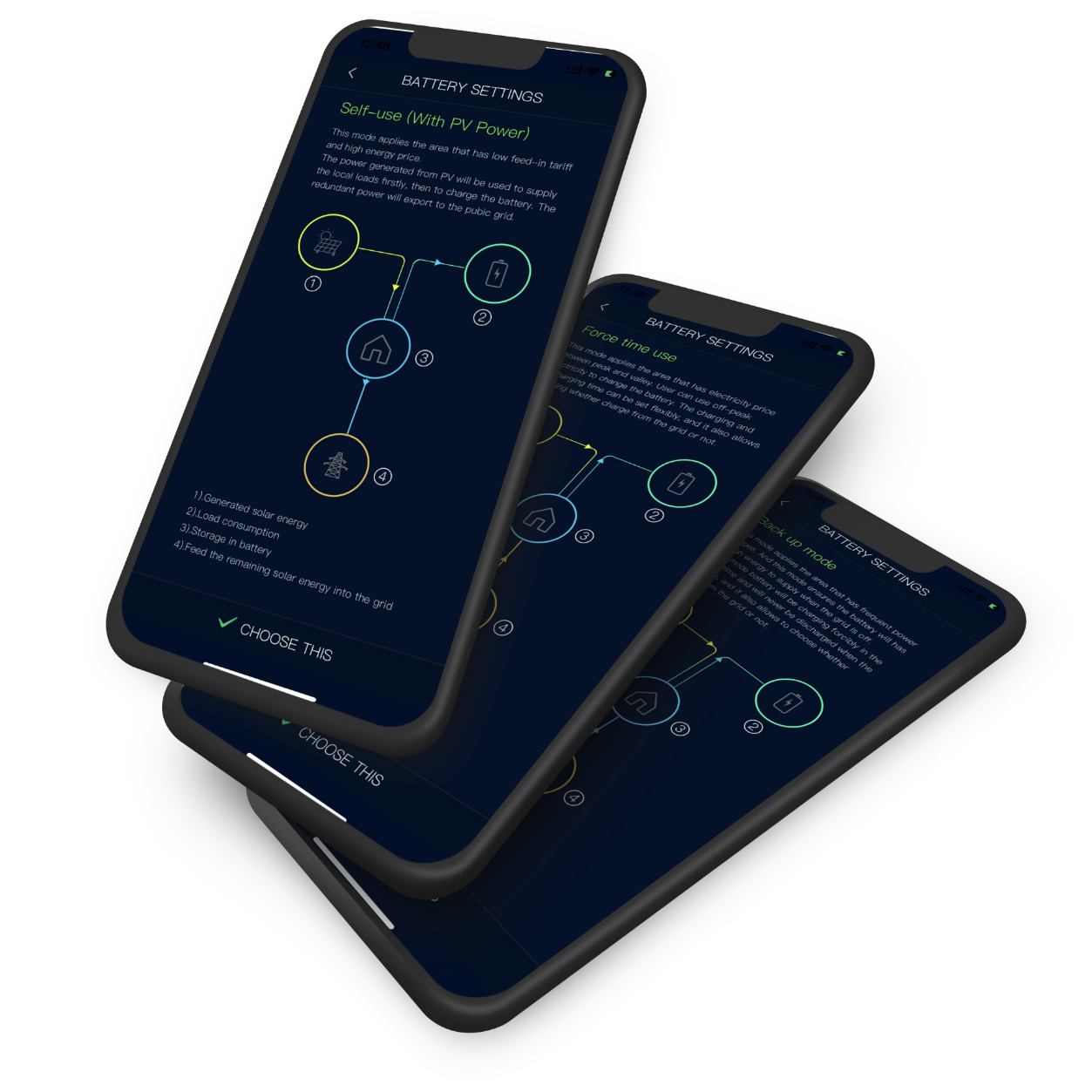In recent years, the global distributed and household energy storage has developed rapidly, and the distributed energy storage application represented by household optical storage has shown good economic benefits in terms of peak shaving and valley filling, saving electricity expenses and delaying transmission and distribution capacity expansion and upgrade.
Household ESS usually includes key components such as lithium-ion batteries, hybrid inverters, and controller systems. The energy storage power range of 3-10kWh can meet the daily electricity demand of households and improve the rate of new energy self-generation & self-consumption, at the same time, achieve peak & valley reduction and save electricity bills.
In the face of multiple working modes of household energy storage systems, how can users improve energy efficiency and obtain greater economic benefits? Accurate selection of the right working mode is crucial
The following is a detailed introduction to the five working modes of the single/three-phase energy storage system of Renac Power’s family residence..
1. Self-use ModeThis model is suitable for areas with low electricity subsidies and high electricity prices. When there is sufficient sunlight, the solar modules supply power to the household loads, the excess energy first charges the batteries, and the remaining energy is sold to the grid.
When the light is insufficient, the solar power is not enough to meet the household load. The battery discharges to meet the household load power with solar power or from the grid if the battery power is insufficient.
When the light is sufficient and the battery is fully charged, the solar modules supply power to the household load, and the remaining energy is fed to the grid.
2. Force Time Use Mode
It is suitable for areas with a large gap between peak and valley electricity prices. Taking advantage of the difference between the power grid’s peak and valley electricity prices, the battery is charged at the valley electricity price and discharged to the load at the peak electricity price, thereby reducing the expenditure on electricity bills. If the battery is low, power is supplied from the grid.
3. Backup Mode
It is suitable for areas with frequent power outages. When there is a power outage, the battery will serve as a backup power source to meet the household load. When the grid restarts, the inverter will automatically connect to the grid while the battery is always charged and not discharged.
4. Feed in Use Mode
It is suitable for areas with high electricity prices but with restrictions on electricity. When the light is sufficient, the solar module first supplies power to the household load, the excess energy is fed into the grid according to the power limit, and the remaining energy then charges the battery.
5. Emergency Power supply (EPS Mode)
For areas with no grid/unstable grid conditions, when sunlight is sufficient, solar energy is prioritized to meet the load, and excess energy is stored in batteries. When the light is low/at night, the solar energy and the battery supply power to the household loads at the same time.
It will automatically enter the emergency load mode when the power goes out. The other four operating modes can be set remotely through the official intelligent energy management app “RENAC SEC”.

The RENAC five working modes of Renac Power’s single/three-phase household energy storage system can solve your household electricity troubles and make energy utilization more efficient!












